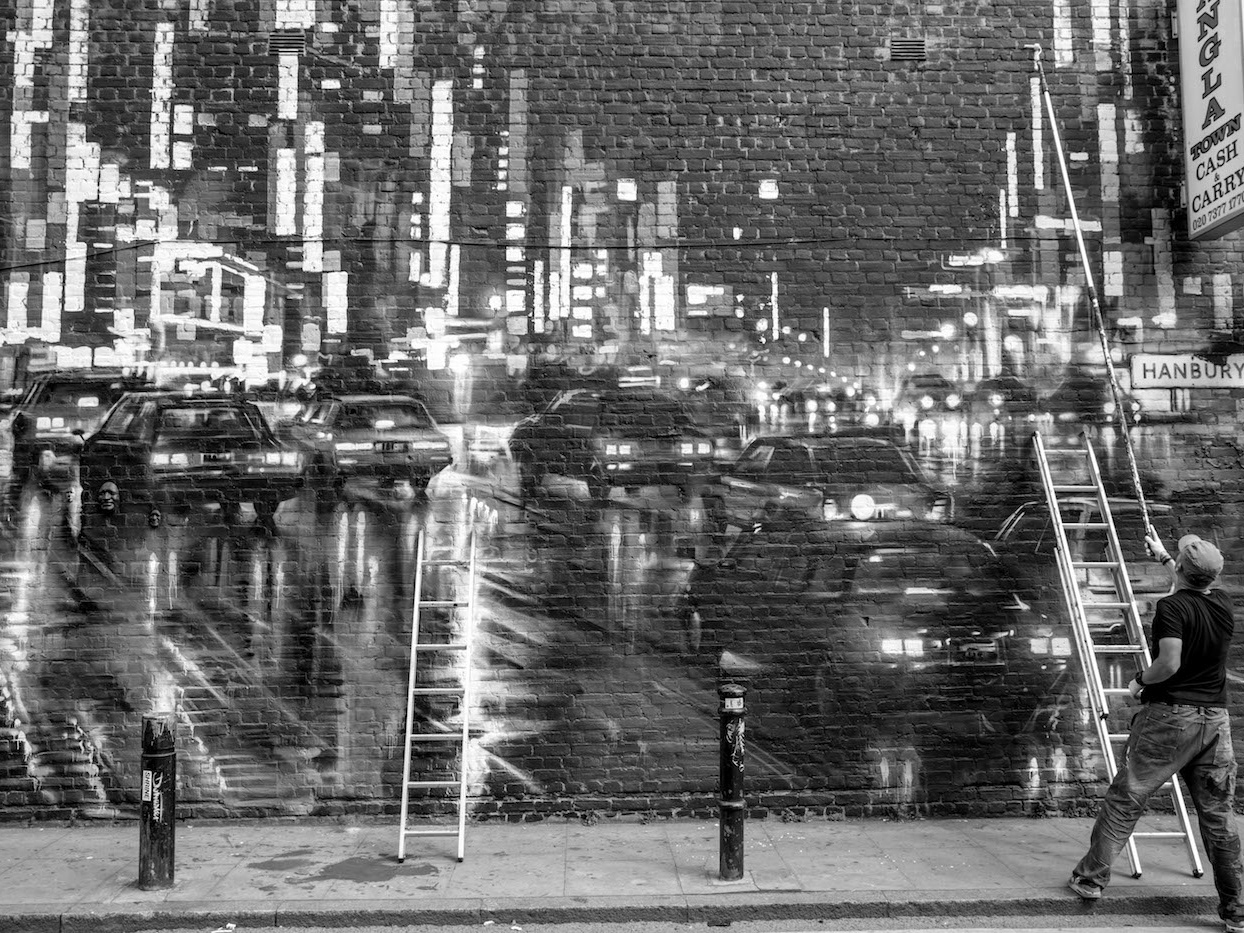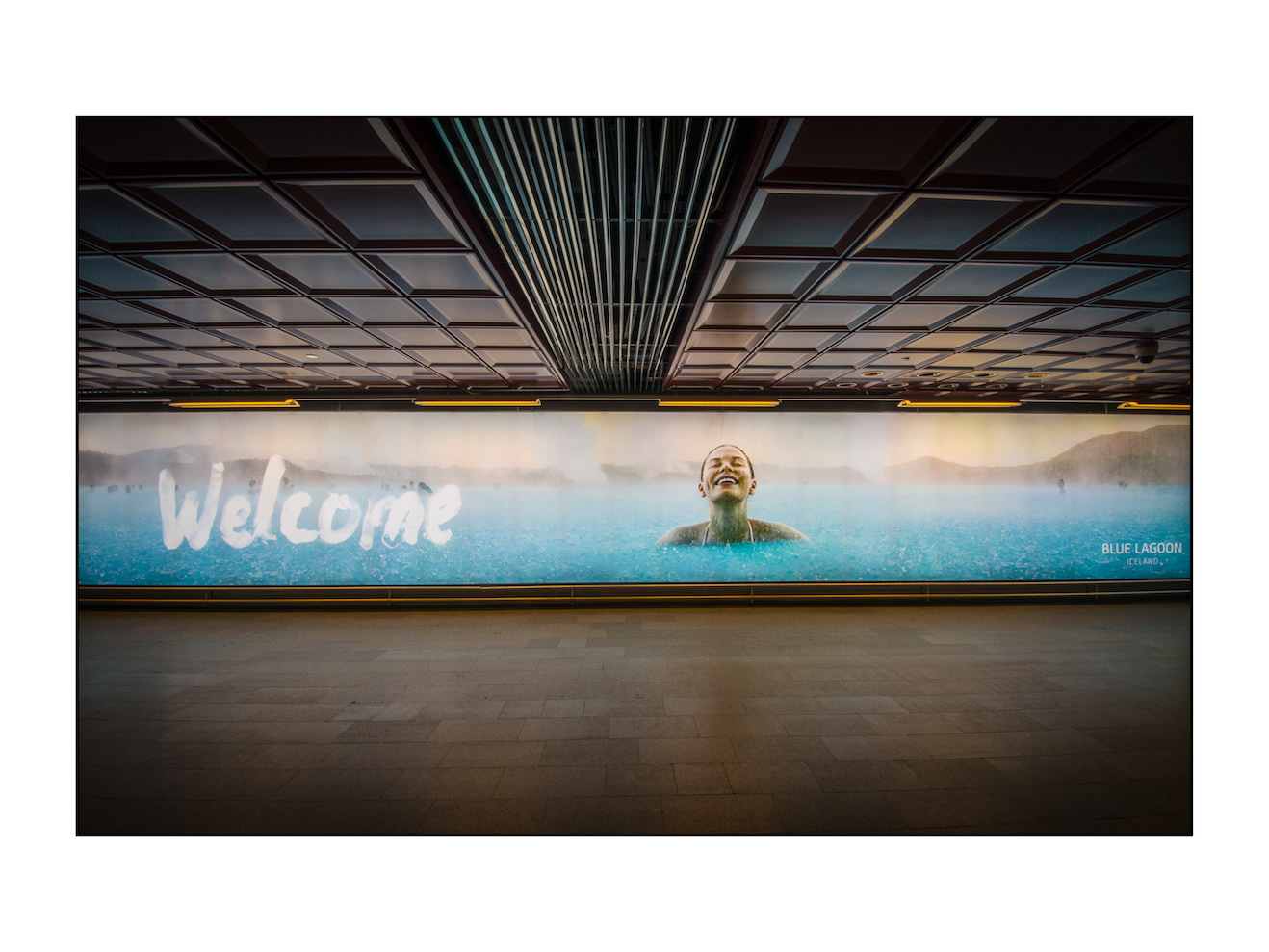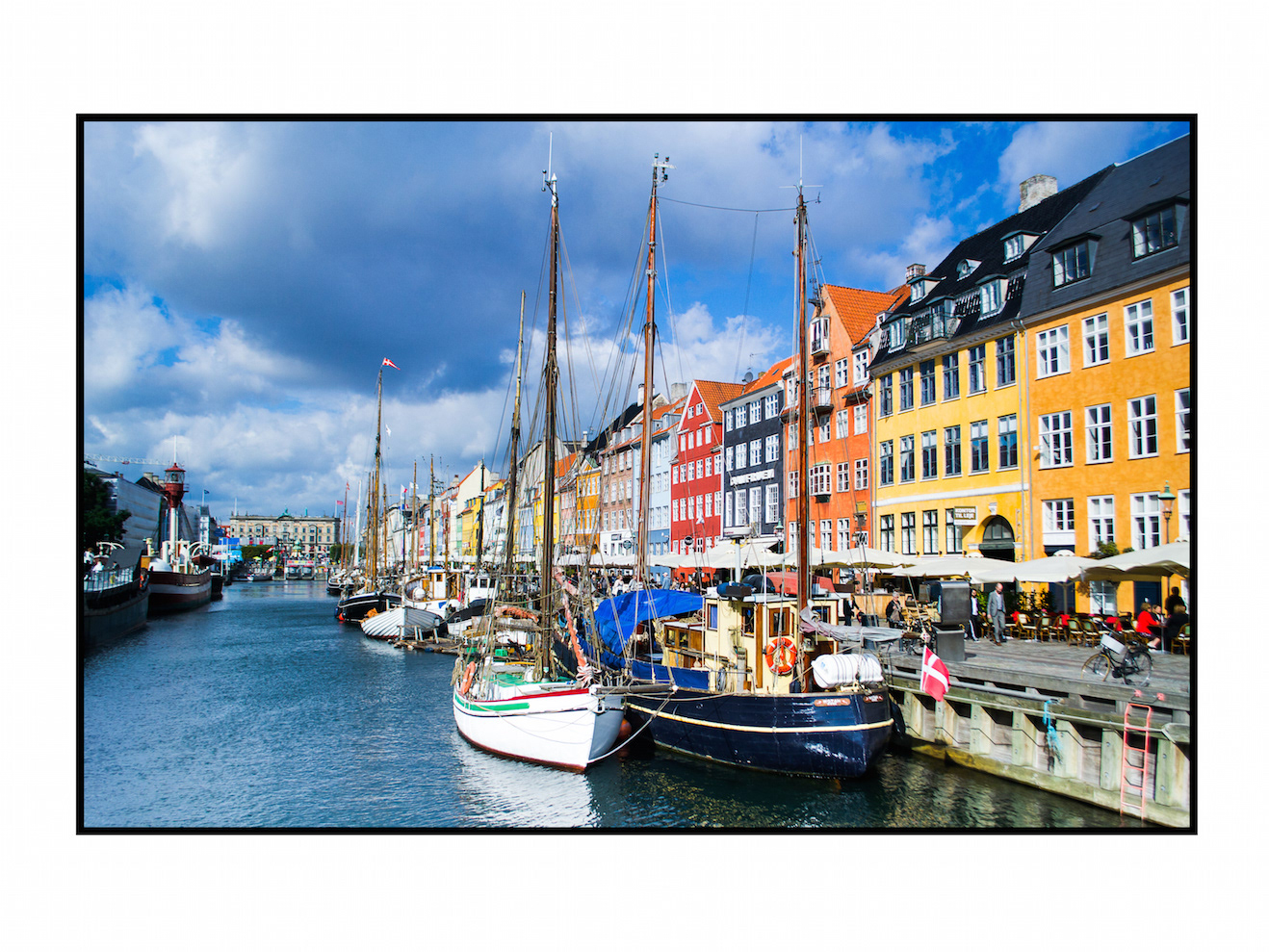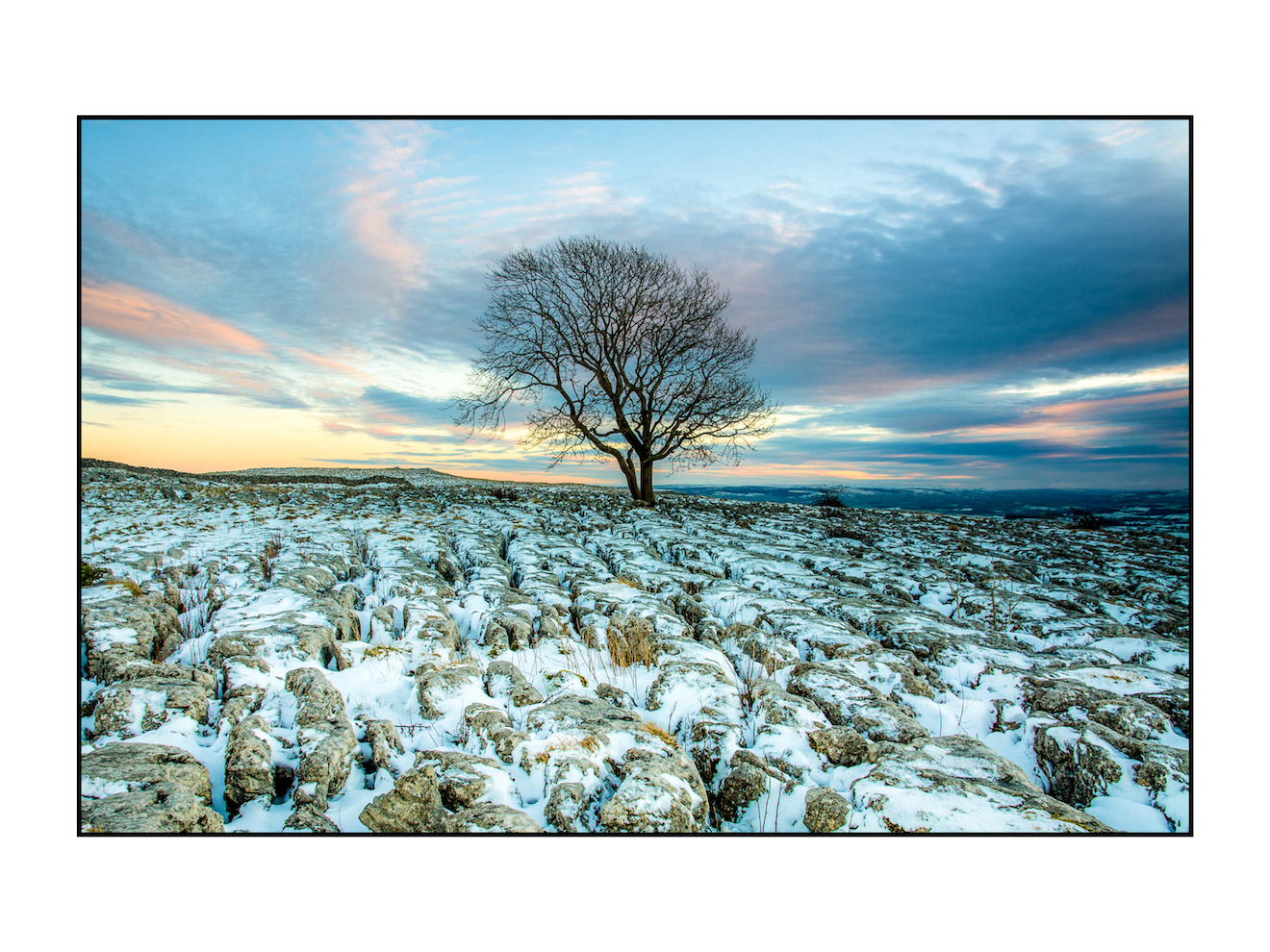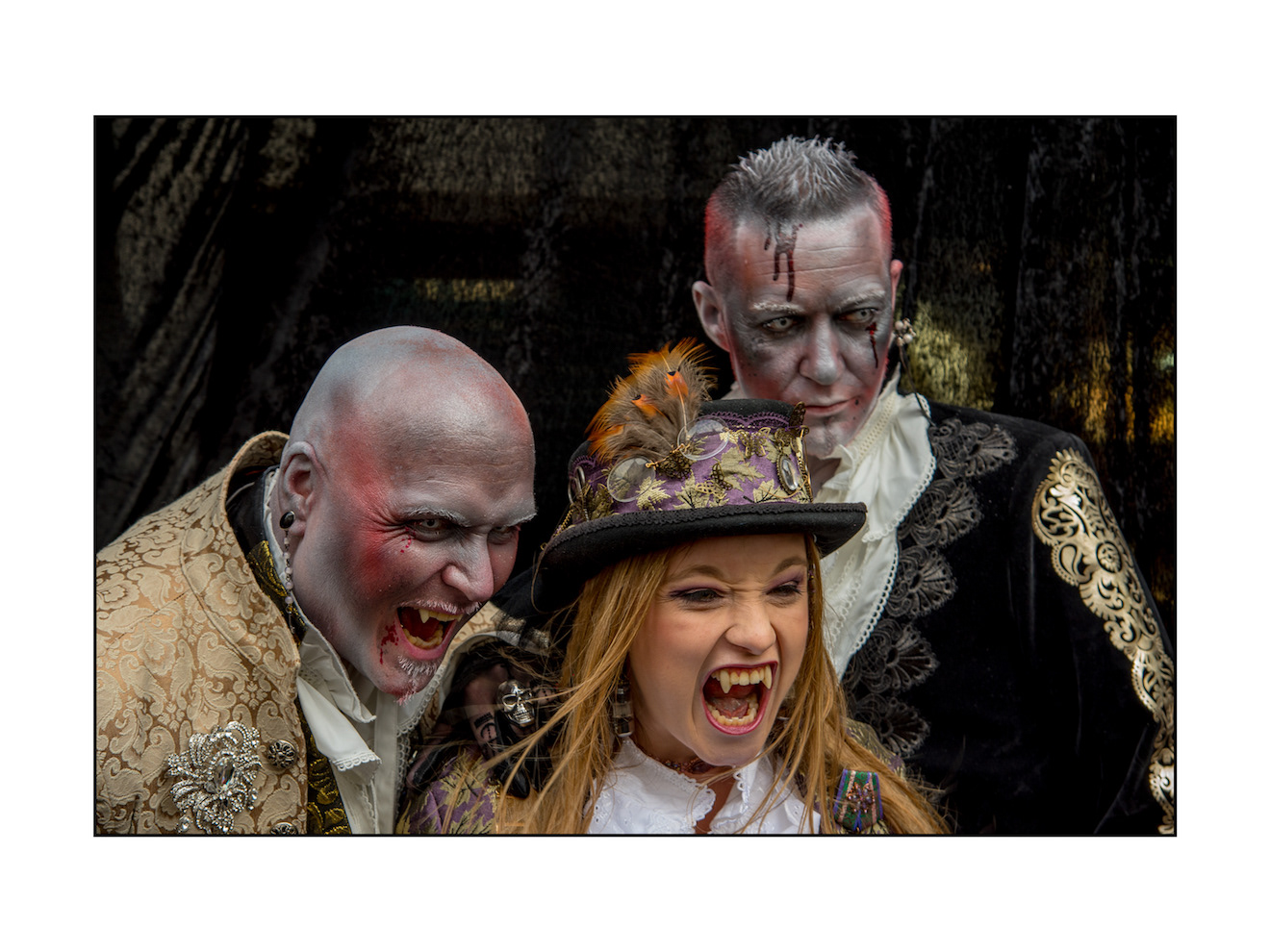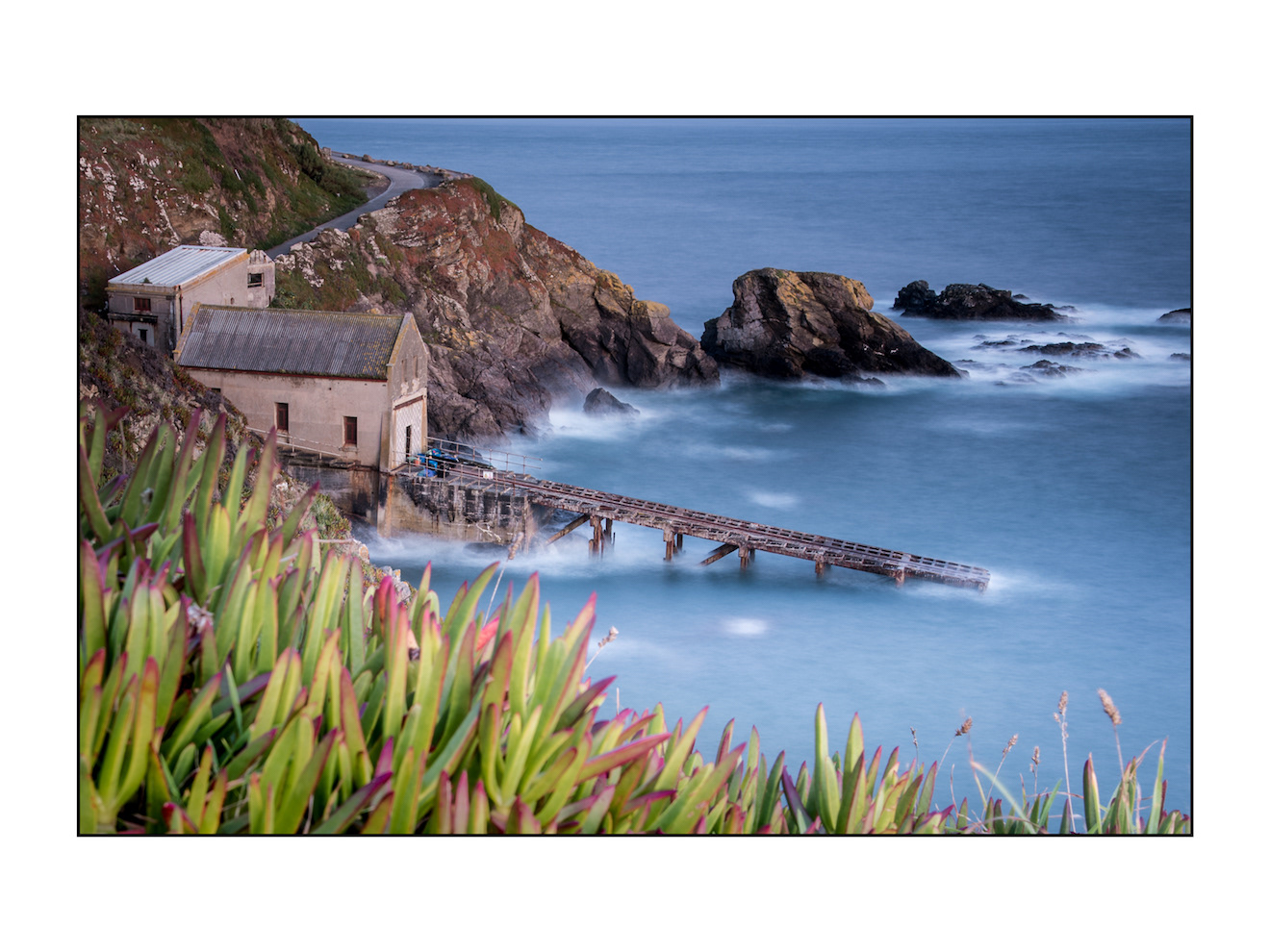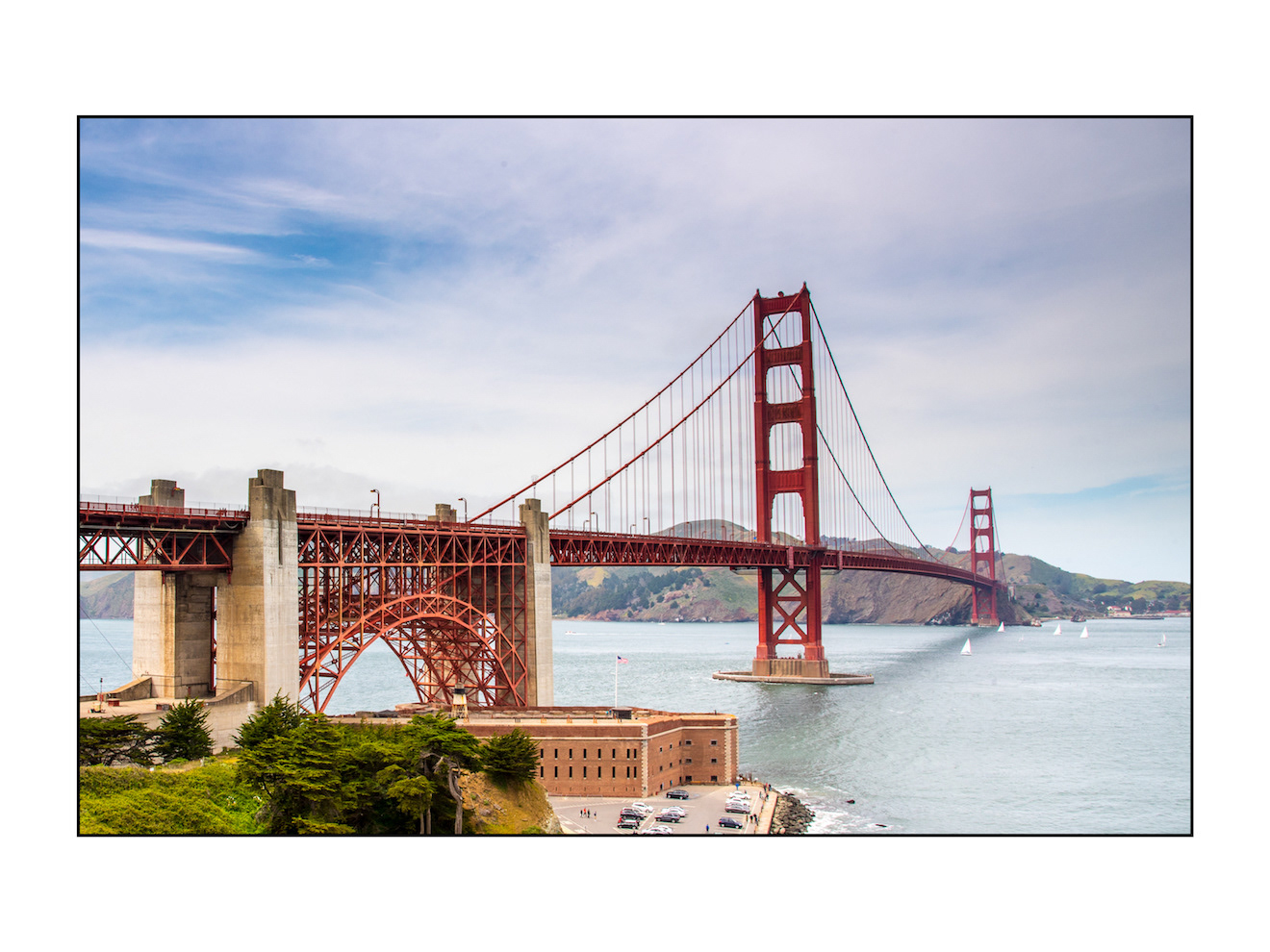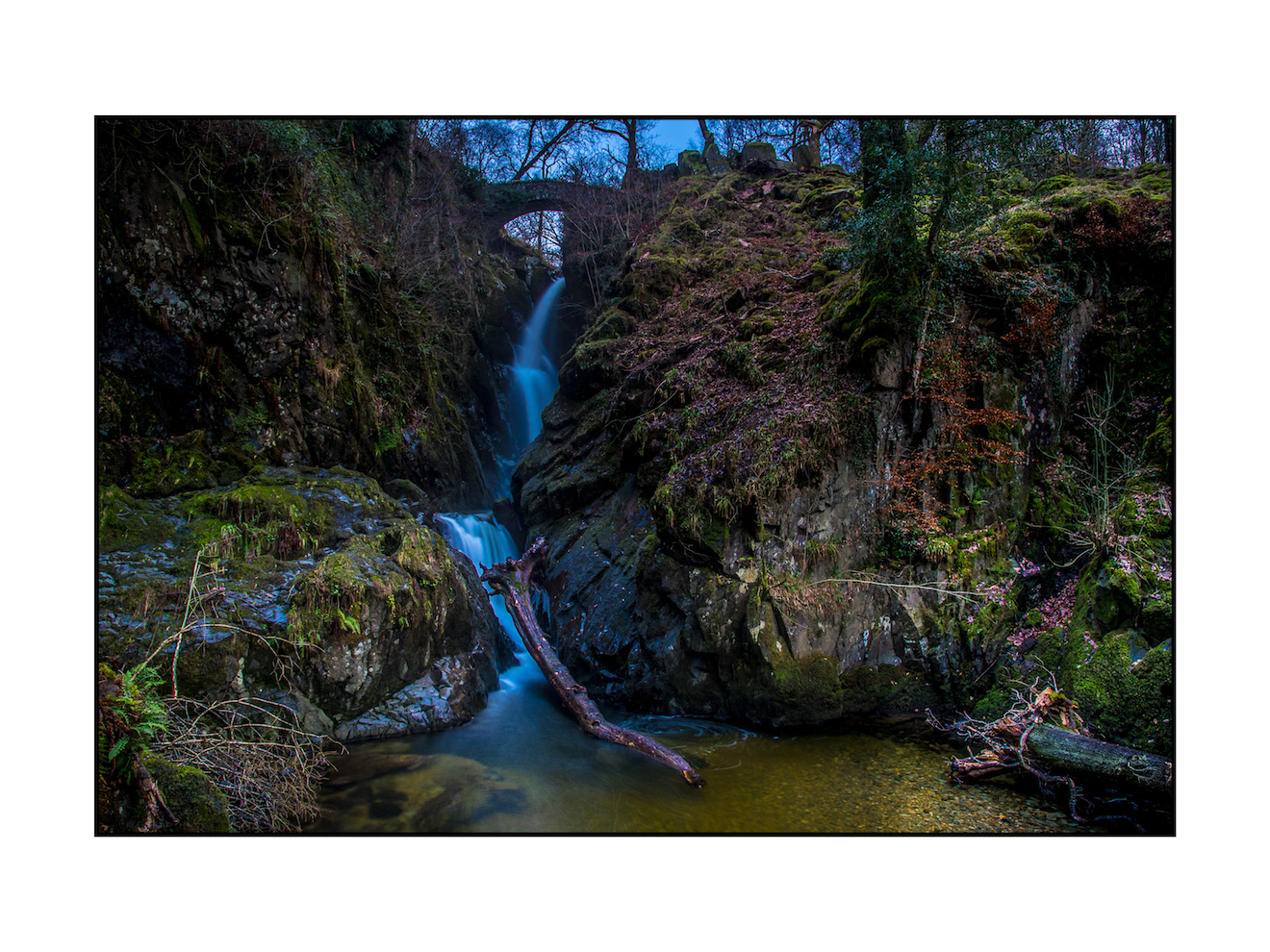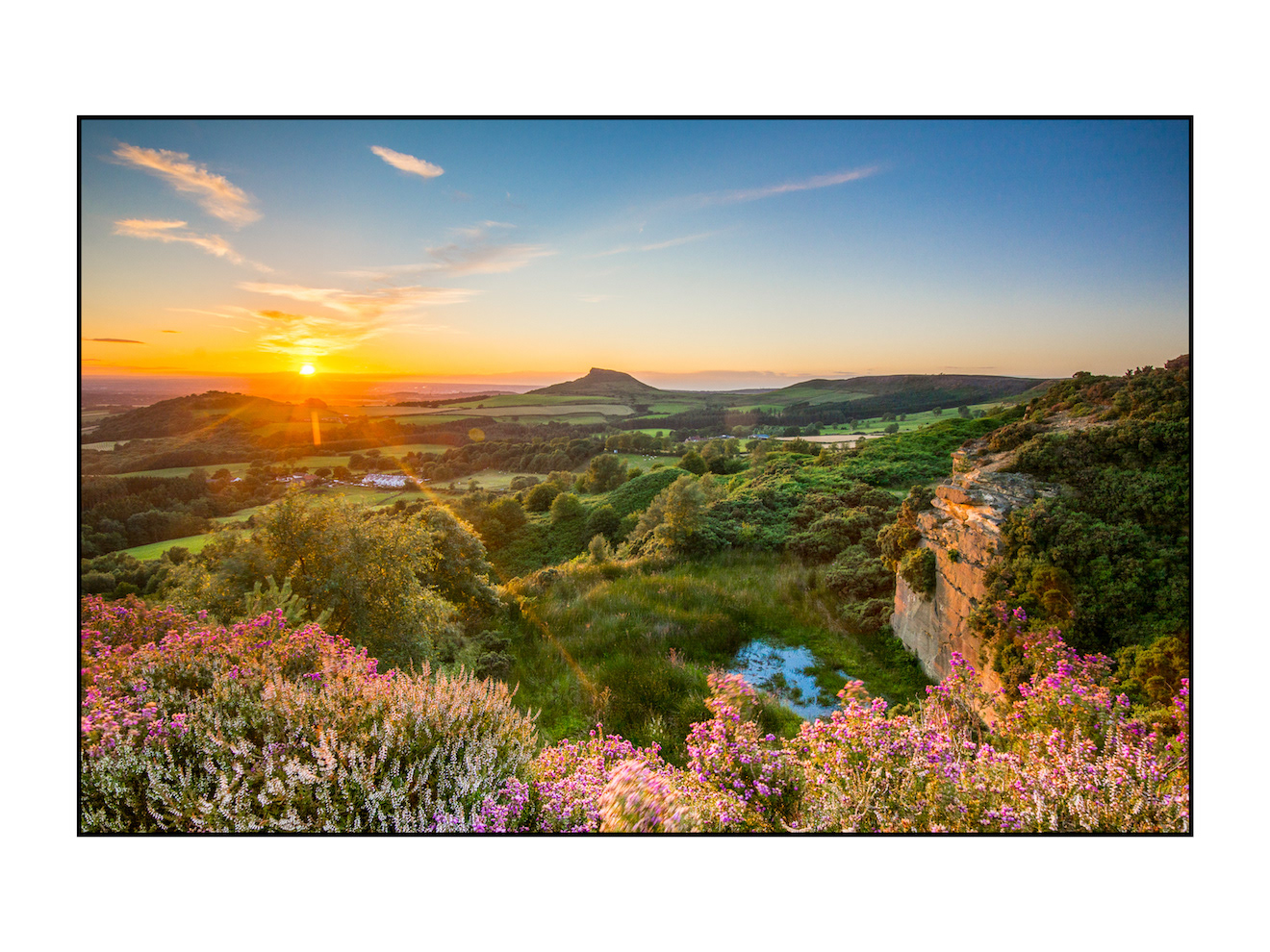2020 Calendar Cover Photograph
In June 2017, a three metre high statue of a Seated Man appeared in one of the most dramatic locations on the North York Moors. So popular did he prove to be, there is speculation that there was opposition from local residents. He was, therefore, without notice moved on Wednesday 10 April 2019. Disappointing news given that it was originally suggested it would be in place for five years! Denied the opportunity to photograph him amongst the summer heather, this is the Seated Man captured in the early afternoon against the winter moorland…
Travelling home from Newcastle late one evening, I noticed that the River Tees was quite placid and there was the possibility of capturing the reflections of the bridge in the river.
This image [the first of the evening at 10:52pm] was selected for February following a vote on social media.
At night the bridge handrail and footway are lit with custom-made blue and white LED lighting built into the handrail that changes colour as pedestrians cross the bridge.
Continuing the theme of bridges and the realisation that being by oneself with photographic equipment by the river late at night might not be the safest environment…
A young Irish man, a keen boxer, took a particular interest in me, despite him constantly being interrupted by his mobile telephone with his girlfriend asking why he had not yet returned home. I even had to speak with her at one stage just to reassure her that he wasn’t with another woman (he later confided in me that he had form!).
Despite his presence, it still came good…
Rievaulx Abbey was the first Cistercian monastery in the north of England, founded in 1132 by twelve monks from Clairvaux Abbey.
Its remote location was well suited to the order’s ideal of a strict life of prayer and self-sufficiency with little contact with the outside world.
The first abbot of Rievaulx, William I, started construction in the 1130s. The second abbot, St Aelred of Rievaulx, elected in 1147, expanded the buildings and otherwise consolidated the existence of what with time became one of the great Cistercian abbeys of Yorkshire, second only to Fountains Abbey in fame.
Newton Wood is probably the best example of semi natural oak woodland in the Cleveland area.
There is plenty of wildlife to spot at any time of year, including roe dear and woodpeckers. It is also renowned for its bluebells in spring, this image ultimately being captured on my third visit on Sunday 12 May 2019.
The bluebells create a stunning indigo carpet across the woodland floor and the backdrop is, of course, the iconic Roseberry Topping.
Summer solstice on the 199 steps in Whitby, having enjoyed cod and chips from The Magpie Café.
The steps were originally made of wood and stood for hundreds of years that way until 1774 when the steps were replaced with Sneaton Stone.
Before the 19th century, when St Mary’s was still open for burials, many people preferred to be carried up the steps, rather than giving their relatives an easier journey and having their bodies carried in a horse and carriage along Green Lane. It must have been extremely tiring carrying a body up 199 steps, so wooden planks were built to place the coffin on and give the pall-bearers a rest. They are now used as benches for the living to rest on.
The cover photograph for the 2019 calendar prompted questions as to its location so I thought I would dedicate a month to the pier…
Steetley Magnesite, also known as Hartlepool Magnesia Works and Palliser Works, was located at Hartlepool Headland. The pier was built to provide fresh seawater to the plant.
In 2005 the site was partly demolished and the pier became a big attraction for local fishermen, despite being incredibly unsafe and dangerous. A section was therefore removed to prevent anyone venturing out.
In the late 19th century, Redcar prospered as a seaside town drawing tourists attracted by its eight miles of sands stretching from South Gare to Saltburn by the sea.
Captured amongst the dunes and marram grass as the sunset one early August evening, when posted on Twitter my tweet received a like from Dan Dewsbury, the television director of the BAFTA nominated The Mighty Redcar…
Teesside Wind Farm has twenty seven turbines just to the east of the mouth of the River Tees and they tend to divide opinion, but they are expected to be decommissioned at the conclusion of the twenty two year lease.
The original intention had been to book an evening at The Horseshoe Hotel at Egton Bridge and arise early the following morning to photograph the lone tree on Egton High Moor surrounded by its carpet of flowering heather.
Alas, the vagaries of weather forecasting did not allow for such an organised shoot but very early one Sunday morning the prospects looked good and I drove to Egton High Moor to watch the sunrise. The heather was resplendent and the tree and the rising sun add to the composition. Hopefully the image captures the peace and tranquillity and warmth of the morning, the peace only being interrupted by the frequent crowing from the many pheasants.
Striking out from Bowlees Visitors Centre, there is a waterfall called Summerhill Force, but because of the recess behind the waterfall it is more affectionately known as Gibson’s Cave. There are a number of smaller waterfalls walking towards Summerhill Force, of which this is one.
Local legend has it that in the 16th Century there was an outlaw named William Gibson at Barnard Castle. It is said that he hid in the cave like recess of the waterfall, and people used to bring him clothes and food as he lived there, hidden behind the water.
Saltburn Pier is the last pier remaining in Yorkshire and was opened in May 1869.
There were celebrations throughout Saturday 11 May 2019, on its 150th anniversary, culminating with the unveiling of new lighting for the pier using low energy, colour changing light bulbs on the underside of the historic walkway and a firework display.
Originally destined to be the May image, I have been asked by a friend if this can be the November image as it is her birthday on 18 November and (of course) fireworks are synonymous with November in any event…
One wet Tuesday in December offered a perfect opportunity to photograph Central Square, as most patrons at that time were sheltering in the micro pubs in Baker Street and Bedford Street.
Not may people ventured into Central Square but the wet paving blocks offer wonderful reflections leading to the Christmas tree, positioned in front of the Town Hall.
The Town Hall is a Grade II listed building, built between 1883-1889 to replace the older and much smaller Old Town Hall.
